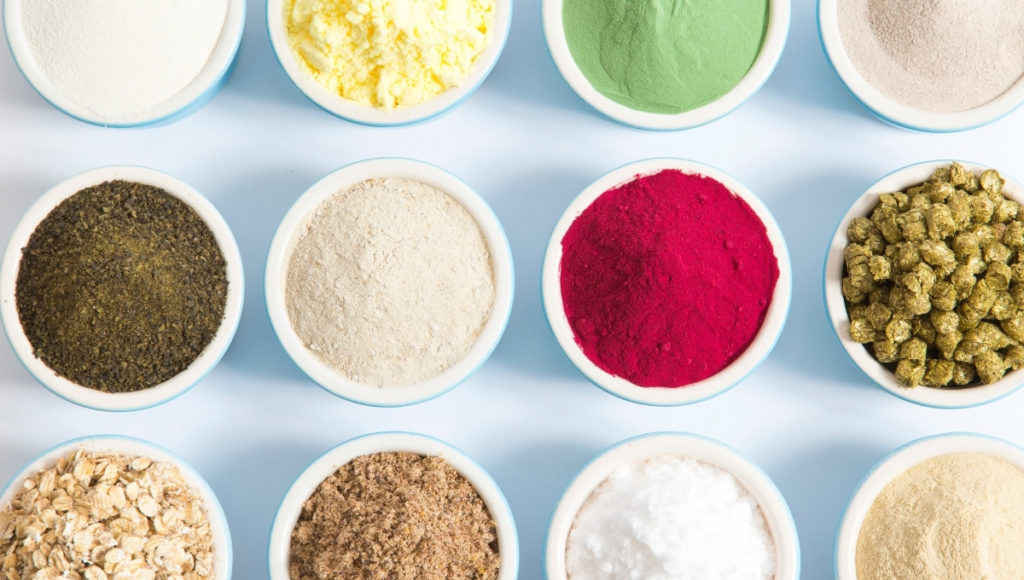- Mycotoxins and the Horse - April 1, 2023
- Winter Horse Feeding - February 3, 2022
- Feeding a Performance Horse - December 21, 2021
Horse Feed Supplements. It certainly is a minefield, and a huge one at that, but the first key to evaluating a supplement is simply to THINK.
In this article, we are going to break down what you should be looking for and the figures to look out for when reading labels and ingredients.
Supplement Endorsements
One of the worst endorsements for an equine supplement I have ever seen was for a salt lick and the fact that it would last their horse for 3 years!
It was hanging from the ceiling, so it’s safe to assume it didn’t weigh 68 pounds, assuming minimum 1 oz/day consumption for 3 years (~31 kg, 28.4 grams). In fact, it only weighed around 1.5 pounds (~680 g).
The whole point of providing a salt supplement is for the horse to eat the salt. Obviously, if it’s lasting for 3 years the horse isn’t eating it.
When confronted this way about the endorsement the reply was that they thought a long life must mean the salt is highly condensed so lasts longer. This entirely misses the point that the purpose of a salt lick is to supply salt and the horse should eat at least 1 oz/day (28.4 g/day).
One and a half pounds (680 g) of salt should last 24 days whether it’s condensed to the size of a baseball or a few inches of coarse crystals.
Supplement purchases should never be an impulse buy. Sponsored riders are the same as NASCAR. It’s a moving billboard. They may or may not use the company’s products. If they do, there is no guarantee they use the one you are interested in buying.
Endorsements/testimonials are also risky. You never know the whole story; the details of diet and management. Even if it’s true that “Tough as Flint” fixed a certain horse’s hoof problems, that doesn’t mean it has the ingredients and dosages that your horse needs.

Reading the Ingredients
The first question to ask yourself is why you are considering that supplement. What do you want it to do? What results are you looking for?
Next is to look at the ingredients. Are they known to produce the effect you are after? What dosages are needed to get that result? How much is in the product? How much does your horse need to complement his diet? Sometimes you don’t have to look any further than the hype:
“There’s nothing else like it! T. Rex Horse Minerals are mined from a pristine deposit located 10 miles below the floor of the extinct volcano, Mount Holy Rock.
They are minerals composed of what would have been the earth’s crust before the first Ice Age combined with the petrified remains of unicellular and multicellular primitive organisms thriving in a lake on the site at that time.
T. Rex Horse Minerals contain each and every mineral defined on the periodic table of the elements and quite possibly a few more that have not yet been identified! There is no need for any other supplements because T. Rex contains it all.”
This stuff sounds like it might be OK potting soil for bullrushes! but horses don’t travel into the pits of extinct volcanos or seek out dry lake beds to get their minerals! They evolved to get the minerals that have been selectively uptaken by the roots of plants, primarily plains type grasses.
The periodic table contains many minerals that are not important to the horse’s health, not to mention things like arsenic, lead and fluoride which are directly toxic. Always walk away when a supplement claims to have everything your horse needs with no other supplements required.
The horse’s needs depend entirely on that individual horse’s diet, as do the amounts needed for any particular mineral. “It’s all in there” is another big red flag claim. Let’s say you passed on T. Rex and are now looking at Black Stallion brand minerals made by a well-known manufacturer. The claim is, that the product contains all the nutritionally essential minerals for a horse. This is sounding better but you still have a lot of investigating to do.

How to do the math
You should always start from a point of at least knowing your horse’s daily requirements (Appendix I). Next, calculate the amount per dose in grams (g) and mg (mg).
One ounce = 28.4 g = 0.0284 kg. For amounts in %, multiply % x .01 x dose in grams; e.g. 10% of 1 ounce = 10 x .01 x 28.4 = 2.84g.
For amounts in ppm, multiply ppm x dose in kg; e.g. 2000 ppm of 1 ounce = 2000 x 0.0284 = 56.8mg.
Electrolytes label tip Salt is 40% sodium, 60% chloride. A supplement that is 60% salt contains 60 x 40% = 60 x 0.4 = 24% sodium and 60 x 60% = 36% chloride.
The Black Stallion literature has several paragraphs talking about how important calcium is and all the functions it has in the body. All of this information is correct. They state the product is “rich in calcium”, which turns out to be 30%.
Working your way down the label, phosphorus is 0.5%, magnesium 0.3%. The supplement also contains salt, potassium, iron, copper, zinc, manganese, selenium, chromium, silicon and iodine. The suggested serving size is 60 grams.
This supplement passes the “It’s in there” test because it does contain all the major nutritionally important minerals.
The larger issue though, is how much? and does that accomplish what you need to supplement and balance your horse’s diet. If you have an adult horse on a hay only or hay and commercial grain diet, the answer is no, unless you have an oxalate laden tropical grass that is tying up all the calcium.
This supplement supplies the NRC recommended minimum daily dose of calcium for a 500 kg horse but only 3.3% of the phosphorus needed to balance that calcium and the chance of having a hay that matches those needs are pretty much zero!
Magnesium is also way too low. Let’s say that you are willing to add wheat bran to the diet to balance out extra calcium and also magnesium as needed because you are really pleased to see it has all the trace minerals you need – but does it really?
Iron, chromium and silicon virtually never need supplementation, so having them in there is actually a negative. Manganese is also adequate to excessive more often than not. Iron and zinc are 1500 ppm, copper 300 ppm, manganese 1200 ppm, silicon 35 ppm, selenium 3 ppm, chromium 6 ppm and iodine 6 ppm.
If you don’t have a hay analysis and you’re feeding a mixed grass hay, origin unknown. Is this at least better than nothing? I would say no. The iron:copper:zinc: manganese ratios aren’t bad but odds are iron and manganese are too high, if needed at all.
It’s possible in some areas that the ratios at least won’t make unbalanced dietary ratios any worse. In that case, you might hope to at least provide a supplement that will correct common individual mineral deficiencies. This one falls short on that score too.
Zinc deficiencies, in terms of the individual mineral requirement for zinc, typically run in the 200 to 250 mg range. At 1500 ppm (1500 mg per kilogram), this supplement only provides 90 mg of zinc per serving.
Copper is also too low. Silicon and chromium are extraneous. Selenium is too low to be having any effect. At 3 ppm (ppm = mg/kg) and feeding 60 grams = 0.060 kg, the selenium you are getting is 3 x .060 = 0.18 mg. Similarly, iodine at 6 ppm = 0.36 mg, too low. “It’s In There” Dosage is every bit as important as finding a mineral listed in the ingredients.
Most supplements do not give you the amount contained in a suggested dose. For trace minerals, they like to use ppm (milligrams per kilogram of supplement) because the numbers look impressive. You may read 3000 ppm of zinc and think that’s high but if the dose you give is only one ounce (28.4 grams) your dose of zinc is 85.2 mg, compared to the minimum recommended daily intake of 450 mg.
If the diet also needs to be corrected for the competing effects of high iron intake it is not at all unusual to need zinc levels of 1000 mg or more.
Learn more about horse feed ingredients here.
Click Here for the very latest Horse Health articles.
Last Updated on December 1, 2021 by Forageplus Team


